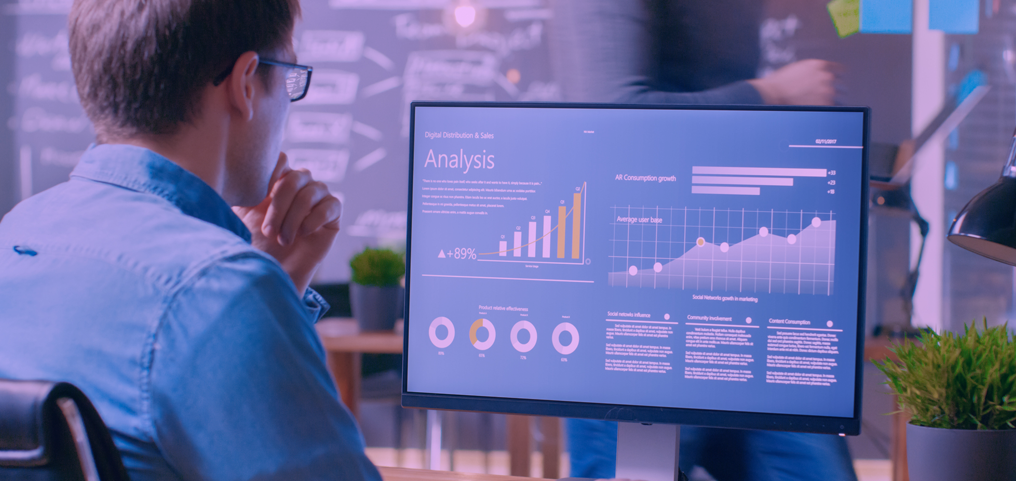news
From Data to Decisions: The AI, IoT, and Cloud-Enabled Supply Chain Transformation
Author: Paul Pallath, Vice President - Applied AI Practice
Analyst Insight: The supply chain industry is on the cusp of profound transformation, as innovations in artificial intelligence (AI), large language models (LLMs), the Internet of Things (IoT), and cloud technology converge to redefine every link in the chain. In 2025, the most agile and resilient supply chains will capitalize on these technologies to create dynamic, data-driven ecosystems that optimize efficiency, responsiveness and scalability.
At the core of this opportunity is cloud technology, which underpins and integrates AI, IoT and LLM capabilities, making this convergence not only feasible, but powerful. With applications spanning digital twins, predictive analytics, personalized logistics and advanced sustainability efforts, cloud technology is redefining the supply chain industry.
AI-Driven Digital Twins
Digital twins represent a breakthrough in visibility and resiliency for the supply chain. By merging IoT sensor data with cloud-based AI models, digital twins provide a virtual representation of the entire supply chain, continuously updated in real time. These models allow companies to simulate complex scenarios, helping them proactively test strategies and refine responses before disruptions occur.
For example, a cloud-based digital twin can simulate the impact of supplier shutdowns, material shortages, or regional transport disruptions, and provide actionable insights for mitigating these risks. AI simulations allow businesses to explore “what-if” scenarios without disrupting operations, providing an understanding of the potential impact of different strategies before implementation. With these insights accessible in real time, global teams benefit from a continuous, data-driven feedback loop that sharpens decision-making and bolsters supply chain resiliency.
AI-enabled Proactive Risk Mitigation
IoT sensors embedded across the supply chain — from manufacturing sites and warehouses to distribution hubs and delivery vehicles — produce a constant stream of valuable data. In addition, there is a significant amount of unstructured data in documents like contracts, purchase orders, bill of lading, invoices and freight forwarding records that are critical for supply chain risk identification and mitigation. Leveraging AI and large language models to analyze this "dark data" can help identify trends, detect potential risks and predict disruptions such as equipment malfunctions, supply shortages or delivery delays.
Cloud platforms enable the real-time aggregation and processing of this data, allowing AI-driven predictive analytics to be deployed at scale. This ensures that data is continuously updated and accessible to decision-makers across the globe, minimizing downtime and maximizing resiliency.
Optimizing Logistics and Sourcing Through Real-Time Cloud Connectivity
Logistics is another area primed for significant improvement through the combination of data and AI. By leveraging technologies that enable data federation and data mesh, companies can curate a single source of truth for logistics and distribution processes. For instance, AI can assess real-time traffic patterns, route constraints and shipment status, dynamically adjusting transportation routes. These continuous adjustments help avoid bottlenecks, reduce transit times and optimize costs, creating an adaptable logistics experience that responds to changing conditions.
Similarly, AI and cloud technology are transforming sourcing and procurement. AI algorithms can analyze supplier data, costs, geopolitical risks and even sustainability metrics to make informed sourcing decisions. Cloud technology fosters collaboration across global teams and suppliers, allowing companies to adjust sourcing based on market shifts or disruptions.
Outlook: Supply chains are transforming through AI, IoT, LLMs and cloud technology. Cloud-enabled AI drives digital twins, predictive analytics and hyper-personalization, enhancing resilience, logistics and sustainability. Real-time data integration streamlines risk management and sourcing, while LLMs foster global collaboration. Together, these create agile, data-driven and adaptable supply chains for 2025 and beyond.
Originally published on SupplyChainBrain.
more news
let's connect
We help you embrace change by creating newer ways to work or optimising existing processes.
let's connect

